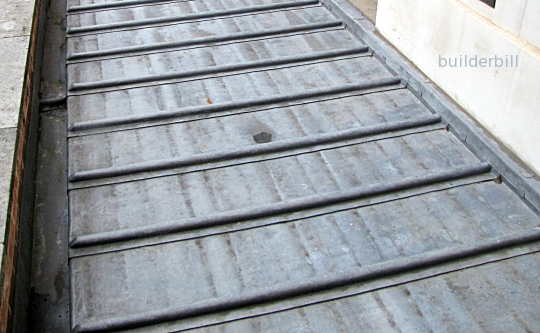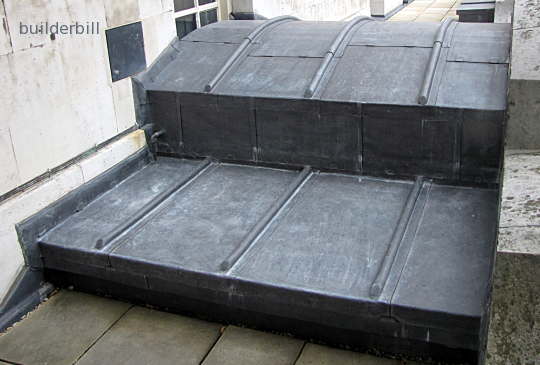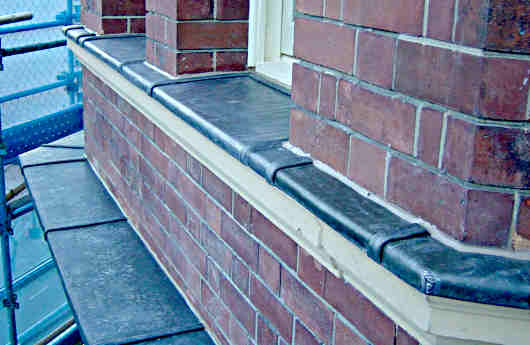 |
|||||||||
lead roofing and lead flashingsWhile not being a huge player in the roofing materials scene lead roofing is still a viable option for some people, and there are some jobs that only lead can do. Lead roofingUntil the advent of modern flat roof materials in say the last 60 years lead reigned supreme for many flat roof jobs.
Lead does not have the visual appeal of a copper roof, but it has a lot of the same attributes.
Lead Flashings
The photos above shows the versatility of lead as a roofing and a flashing material. Measured, cut out of the roll fit and dressed into shape all on the roof. Only simple hand tools required. In the top photo the box gutter against the parapet wall is also formed out of lead sheet. The flashing around the wall and window above are made of of lead. It is not without some drawbacks though.
Heritage work
Living and working as I do in a very young city I have not come across many conservation issues in my career so writing pages like this is a pleasant education for me. Greg Bradley from Dynamic roofing in Sydney makes these points on his website which will explain the above photo:- "Lead is increasingly being specified by Conservation Architects and Heritage professionals as a protective covering for sandstone ledges and decorative items such as gargoyles, urns, statues etc. As stone buildings weather there can be a degradation of the stone which can literally crumble away and this is particularly true of sandstone. A a lead capping protects the ledge or roof decoration from further erosion." Thanks Greg. Joints in lead roofing.Lead comes in rolls of various thicknesses and on any job it has to have joints. Over the centuries lead workers have evolved waterproof joints.
Not lead roofing, a cautionary tale.A few years ago over a period of time I did about four shop fitouts for a radiology practise. In the rooms where the X-ray machines were we had to line the inside of the walls with sheet lead to prevent radiation leaking to the rest of the building. When we had finished the lead work I rang the health department physicist to come out and inspect the work before we covered it with plasterboard. The guy simply asked if we had done it to specs and when I said "of course" he told me to go ahead and cover it up. I thought "crikey he's a bit casual" He was't all that trusting. When the job was finished and all the machines were installed he had the large machine turned on and directed at all angles, while he walked around outside of the room with what I presume was a Geiger counter to see if the room was safe. Now wasn't I lucky that I hadn't left a few pieces out or skimped a bit on the joints? Not found it yet? Try this FAST SITE SEARCH or the whole web |
Hire Equipment  Furniture Fittings - Architectural Hardware - Electronic Locking Systems - Technical Hardware BuilderBill sponsorship Roofing material pages.In general the links on this page are to fairly detailed pages, but don't forget the Illustrated Roofing Glossary Roof Coverings Section as each item has it's separate page with photographs and information.
BuilderBill Books Building Maths |
||||||||
|
|
|||||||||
|
Please Note! The information on this site is offered as a guide only! When we are talking about areas where building regulations or safety regulations could exist,the information here could be wrong for your area. It could be out of date! Regulations breed faster than rabbits! You must check your own local conditions. Copyright © Bill Bradley 2007-2012. All rights reserved. |
|||||||||


